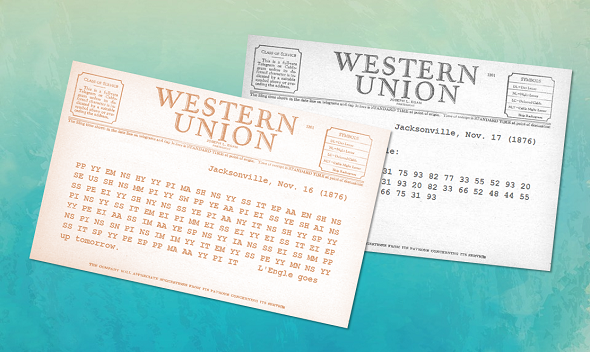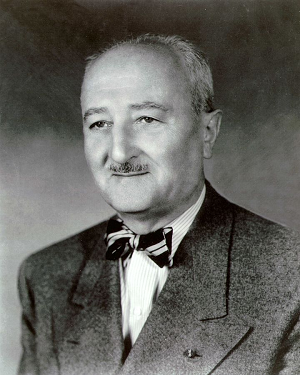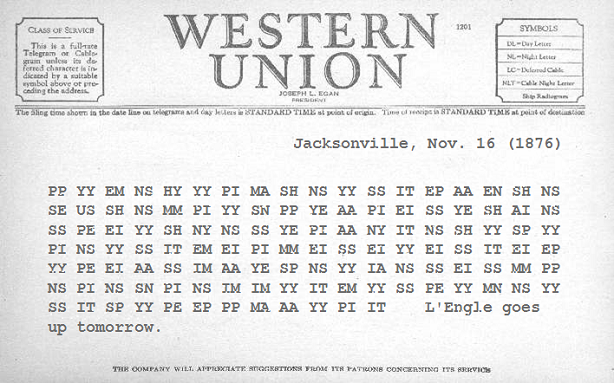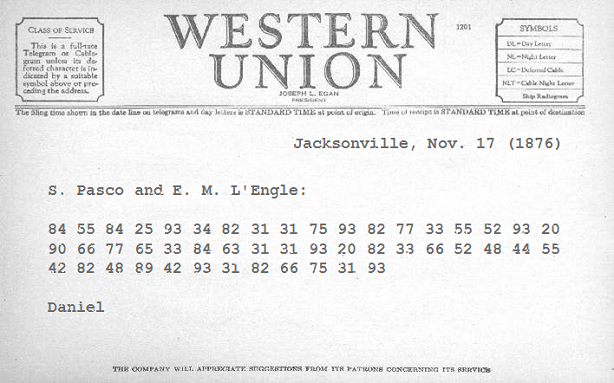In one of his lectures, master codebreaker William Friedman once mentioned two encrypted telegrams. He knew the solutions, but he didn’t reveal them. Can a reader break these encrypted messages?
William Friedman (1891-1969) is considered the most successful codebreaker in history. In his career, which spanned almost four decades, he solved over 1,000 encryption codes, including the Japanese WW2 cipher machine “Purple”. He also occupied himself with the Voynich manuscript and the Shakespeare Bacon debate and published important works about these topics.
Friedman’s lectures
Friedman was also a skilled instructor. He gave numerous cryptology lectures, and his crypto text books (e.g. “Military Cryptography”) are still worth reading today.
The NSA Center for Cryptologic History has published the scripts of some (not very technical) cryptology lectures Friedman gave at a later point of his career. These scripts cover many interesting chapters in crypto history, including detailed descriptions of the encryption methods that were used.
In one of the lecture scripts, Friedman reports on the US presidential election of 1876. When the result of this voting between Hayes (Republicans) and Tilden (Democrats) turned out to be extremely close, both sides tried to influence the vote counting. In fact, many polling spots saw several countings with suspiciously different results. When a congressional commission later tried to investigate the alledged manipulations, they encountered numerous encrypted telegrams that were sent by the conspirators during their illegal activities.
Two telegrams that should amuse you
In his script, Friedman describes an encryption system and two telegrams that played a major role in this story (please note that the pictures below are photomontages, no original scans of the telegrams):
Another system used by the conspirators employed a bilateral substitution, that is, one in which a pair of cipher letters represents a single letter. This substitution was based upon a 10×10 checkerboard. […] Here are two of the massages exchanged by the conspirators, one in letter cipher, the other in figure cipher. The messages are long enough for solution. Try to solve them, reconstruct the matrix and find the key phrase from which the coordinates of the matrix were derived. It should amuse you by its appropriateness.
Here’s a transcription of the first telegram:
Jacksonville, Nov. 16 (1876)
Geo. R Raney, Tallahassee:
PP YY EM NS HY YY PI MA SH NS YY SS IT EP AA EN SH NS SE US SH NS MM PI YY SN PP YE AA PI EI SS YE SH AI NS SS PE EI YY SH NY NS SS YE PI AA NY IT NS SH YY SP YY PI NS YY SS IT EM EI PI MM EI SS EI YY EI SS IT EI EP YY PE EI AA SS IM AA YE SP NS YY IA NS SS EI SS MM PP NS PI NS SN PI NS IM IM YY IT EM YY SS PE YY MN NS YY SS IT SP YY PE EP PP MA AA YY PI IT L'Engle goes up tomorrow.
This is the second telegram:
Jacksonville, Nov. 17 (1876) Pasco and E. M. L'Engle:
84 55 84 25 93 34 82 31 31 75 93 82 77 33 55 52 93 20 90 66 77 65 33 84 63 31 31 93 20 82 33 66 52 48 44 55 42 82 48 89 42 93 31 82 66 75 31 93
Daniel
Friedman didn’t reveal the solution of these two telegrams. Can a reader break them?
There’s another question I would like to ask my readers. When the congressional commission researched the vote manipulations, some of the encrypted telegrams were leaked to the press. The newspaper New York Tribune took the chance and published many of these cipher messages, some even on the title page. As the cleartext was not known, readers were encouraged to break these cryptograms. Does anybody know if these newspaper articles are available somewhere? Can I get them online? Any hint is appreciated.
Follow @KlausSchmeh
Further reading: Albert Pohrt’s Postcards






Kommentare (21)